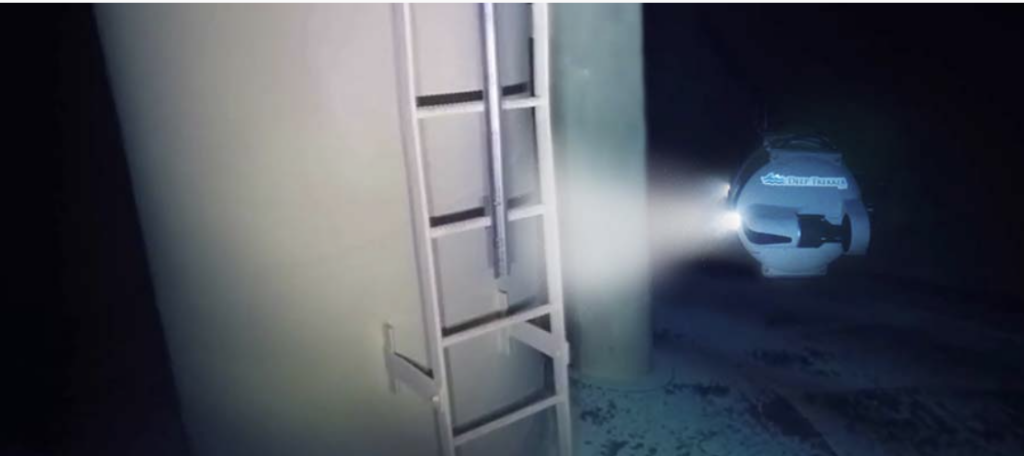Underwater ROV Inspections

Our ROV technicians encounter many environmental difficulties during their Underwater ROV Inspections during winter. Unexpected weather changes, frigid temperatures, and less-than-ideal environments can cause delays or have an effect on a team’s health and safety during Underwater ROV Inspections. The success of a Underwater ROV Inspections as well as the safety of our field workers depend on careful project preparation. So how do you cross a frozen lake securely to get to an intake? or use wet equipment in temperatures below zero? You sometimes can’t just release a ROV from a typical launch point when you need to get to a specific spot that is surrounded by winter construction or other barriers. Last winter, one of our ROV teams faced a difficult task: getting to an intake that was only a few feet below the frozen lake’s surface. The frozen water above the intake made it impossible to access the area as well. The answer to this problem was to cross the frozen lake in a helicopter to get to the destination. The client entered the location and forced compressed air through the tunnel. This approach helped staff members find the input while also breaking up the internal ice. The ROV Team and their equipment were delivered to the location by helicopter.A variety of sensors that are capable of 3D modelling, HD video, video stills, photogrammetry, and sound imaging can be added to Ven-Tech Subsea’s remotely operated vehicles. Our fleet […]

